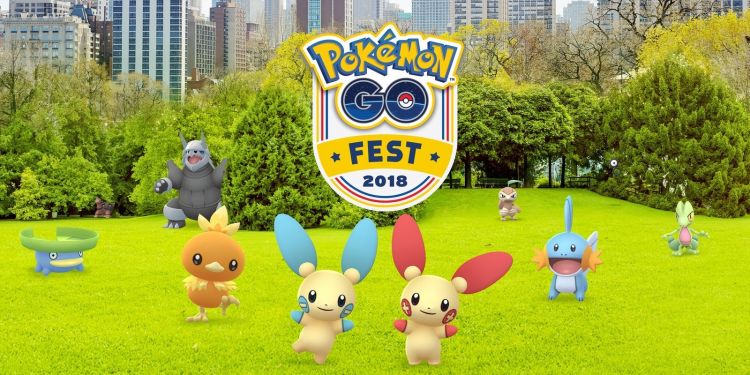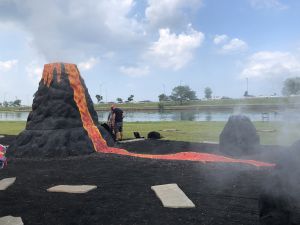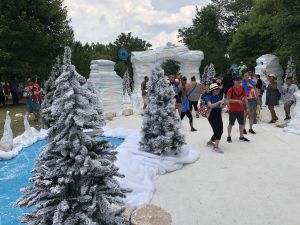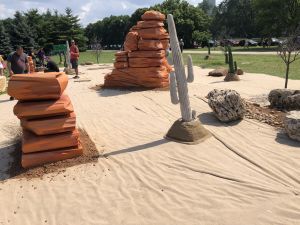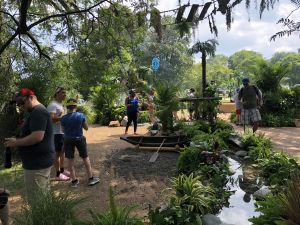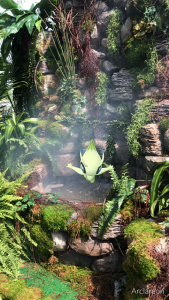Last summer, Niantic decided to create the first ever Pokemon Go Fest. It didn’t go so well. Despite sounding like a perfect idea for one of the biggest mobile games of all time, the 2017 festival fell flat on its face faster than a sprinting Psyduck. Held in Chicago, a central location for the US, it crammed too many people into Grant Park, one of the city’s smaller ones. With not enough cell service for all the people, hardly anybody could play the game. And that was after many had waited in long lines just to get in. A class action lawsuit followed, which was only just settled a few weeks ago.
Nevertheless, Niantic decided to try again. For 2018, their first change was a crucial one. Instead of Grant Park, they selected the much larger Lincoln Park. They also expanded the event to July 14th and 15th, two days instead of one. Still, just weeks before this year’s festival, the Pokemon Go event in Germany suffered from connection issues. While Niantic resolved them quicker than at last year’s Go Fest, they still had people worried. Sure, Go Fest 2018 would likely be better than last year’s, but would it be a success?
After attending last week, I can say that the event was not only a success, but a triumph. Crowds? Lincoln Park is so big they weren’t an issue. Lines? With an automated scanning system, there were no lines. Connection issues? Temporary cell towers were set up well in advance, so the game ran almost flawlessly.
While delivering the event that Niantic originally promised would be a success, Go Fest 2018 set the mark higher. After a failed event, it’s not enough to have one that simply “works.” So this year’s had to go above and beyond. On top of the chance for players to gather together, it had a theme of “A Walk in the Park” based on exploring various habitats. Niantic split the park into four different biomes; volcanic, glacial, desert, and rain forest. Not only did they populate these biomes with their respective Pokemon, but they built physical habitats for players to explore. I was particularly impressed with the rain forest habitat, which featured a waterfall, a stream, bridges, and an explorer’s expedition tent. Each of these stations had prize giveaway for players who had caught the most Pokemon.
Aside from the biomes, the game tied the nature theme together with an exclusive research quest that netted players a Celebi. I was slightly dissappointed by this since my Celebi turned out to be a weak one, but it was a neat concept. The other drawback of the event is that it didn’t have any raids. But this is understandable, since Niantic likely worried that these would crash the game. Instead, they populated the park with rare and exclusive Pokemon, such as Torkoal, Unown, Feebas, and Slakoth. They also increased shiny rates, and I snagged myself six of them.
For those who did want to raid, Niantic had plenty of Lugia and Articuno raids taking place in downtown Chicago. This proved to be a fair compromise for those who wanted to raid, and for those who didn’t get tickets to Go Fest. Speaking to people who came from out of town, many came for the weekend, using their ticketed day for the event and their non-ticketed day to raid in the loop (that’s what we call downtown Chicago).
On top of the raids for Chicago players, Niantic also implemented rare Pokemon spawn throughout the world and a Global Catch Challenge that resulted in the release of Shiny Zapdos last Saturday. With the new trading feature released, guests had a reason to interact throughout the event. All in all, Niantic proved that Pokemon Go Fest could live up to its potential. Now that they know it’s possible, I’m curious to see what they do next year. Perhaps the game will feature battling by then? Only time will tell, but it looks like the future of Go Fest can only improve.


